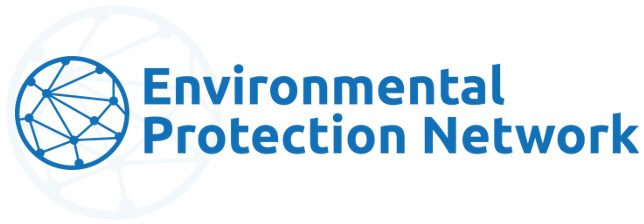EPA has announced two implementation competitions for Climate Pollution Reduction Grants (CPRGs) – a General competition for applications from states, municipalities, tribes, tribal consortia, and territories, and a competition only for Tribes, Tribal Consortia, and Territories. These competitions are open to entities that received planning grants to develop Priority Climate Action Plans (PCAPs) under phase 1 of the CPRG program, as well as entities that did not directly receive a planning grant that are applying for funds to implement measures included in an applicable PCAP. Eligible applicants may only apply for funding to implement measures contained in an applicable PCAP.
Below are the suggested steps you should follow to apply to both the General Competition and the Tribes and Territories Only Competition. Although the General competition deadline is April 1, 2024, at 11:59 p.m. ET., EPN suggests submitting by February 27th, 2024, to allow time to submit the Tribes and Territories Only application by the May 1, 2024, 11:59 p.m. ET deadline.
Steps to apply
To track these 11 suggested steps, you can use this CPRG Implementation General and Tribal and Territories Only Competition Checklist (provided by EPN and Anese & Associates) with links to Mandatory and Optional Documents and additional resources (provided by EPN, Anese & Associates, Climate Justice Alliance, ClimateXChange, and the Conveners Network). Using the CPRG Implementation General and Tribal and Territories Only Competition Checklist can help you divvy up sections among partners, track your work, and mark sections as complete. All of the sections on this checklist need to be included in your final application.
 |
If You Are Not Already, Register for SAM.gov and Grants.gov – by Friday, December 22
You must be registered with SAM.gov (and have your Unique Entity Identification (UEID)) and Grants.gov. Registering can take weeks (if not months). To register on SAM.gov,* go here. For help, access the registration checklist and EPN’s SAM.gov registration webinar. In addition, EPN holds SAM.gov registration office hours every two weeks on Wednesdays from 2-3 p.m. ET. We’ll help you begin, continue, or finish up your registration process. To sign up and get the Zoom link, go to tinyurl.com/EPNSAM. Please email davina.resto@environmentalprotectionnetwork.org with any questions. Also, please review the Intro to Grants.gov – Understanding User Roles and Learning Workspace – User Roles and Workspace Actions to assist with application submission. To register at Grants.gov,* go here. For help, use the registration checklist and watch this Youtube video. If you need additional help, send us an email. *To check your registration status, go here for SAM.gov, and here for Grants.gov. |
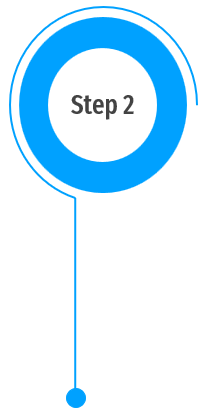 |
Review EPA Resources – by Friday, January 5
A: Carefully read the CPRG summary and the entire General Implementation Notice of Funding Opportunity to ensure that your project is a good fit. You can also access an overview of both the Tribal and Territories and General competitions here, created by the University of Minnesota-led Region 5 Thriving Communities Technical Assistance Center. B: Double check the CPRG Eligibility on page 17. C: Read the General Implementation Qs and As. D: Watch the General Implementation webinars: Sept. 21st Webinar and Oct. 3rd Webinar. E: Read the Sept. 21st webinar slides. F: Check out the CPRG Training, Tools, and Technical Assistance. G. Email questions to CPRG@epa.gov about the NOFO. H. Sign up for the Climate Pollution Reduction Grants program newsletter to receive announcements about future implementation grant application webinars. |
 |
Submit Optional NOI and Solidify Partners & Envision – by Friday, January 12
A. Submit the optional Notice of Intent (NOI) (Page 1 of the NOFO) to apply by the deadline of February 1, 2024, via email to CPRG@epa.gov. B: Solidify your partners and collectively envision your proposal. C: Schedule a time to speak with your partners and brainstorm about your proposal. D: Read through the CPRG Project Narrative Template and Sample Project Narrative (provided by Anese & Associates). Create a copy of the Template, in Google Docs, that all partners can access. E: Divvy up sections of the project using the Project Narrative Template (see instructions below, Step 4) and Mandatory and Optional Documents (see instructions below, Step 5) among partners. |
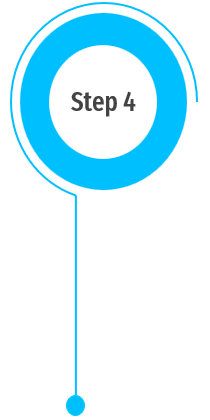 |
Lead Applicants Submit PCAPs and Read, Write, and Review the Project Narrative – by Friday, February 2
A. If you are a lead organizations for a CPRG planning grant, we recommend that you submit a Priority Climate Action Plan (PCAP) as the first deliverable under the CPRG Planning Grant as soon as possible (ASAP!) to allow time for you to focus on the Implementation Grants application, which includes GHG reduction measures identified in the PCAP. B. If you did not directly receive a planning grant but are eligible to seek funding to implement one or more GHG reduction measures that are included in an applicable PCAP, EPA will publicly post all PCAPs received on the CPRG website, and you can access the list of CPRG Planning grant contact information for states, municipalities, and Tribes here (the list will continue to be udpated on the CPRG Planning Grant Information page). C: Complete the Summary Project Cover Sheet. If preferred, use the Sample Project Cover Sheet provided by EPA. D: Access the optional General Competition Workplan Outline to organize the Workplan and ensure that all sections (corresponding with the evaluation criteria) outlined in the NOFO are addressed. E: Write the full Project Narrative using the Project Narrative Template, and refer to the Sample Project Narrative as needed. F: Write the Budget Narrative, which can be completed in the same document as the Cover Sheet and Workplan or in a separate file. Remember, this does not count toward the 25-page Workplan limit. G: Create the Technical Appendix. Again, this can be included in the same document as the Cover Sheet and Workplan or in a separate file, and it doesn’t count toward the 25-page Workplan limit. H: Review your Project Narrative using the CPRG Evaluation Criteria to ensure that all requirements have been met in each section and that all possible points should be awarded. |
 |
Complete Mandatory and Optional Documents – by Friday, February 16
A: Create the following Mandatory Documents, all of which should be completed directly in Grants.gov: B: Create the Optional Documents and submit directly to Grants.gov. – Use the Other Attachmnents Form to submit the optional GHG emission reduction calculations spreadsheet. C: Review your application using the CPRG Evaluation Criteria to again ensure that all requirements have been met in each section and that all possible points should be awarded. |
 |
Review and Submit – by Tuesday, February 27
Although the deadline is Monday, April 1, plan to submit to Grants.gov, ideally by Tuesday, February 27, to give yourself time to troubleshoot if you have any difficulty submitting, as well as to make modifications to your general application for a tribal/territories application submission. These step-by-step instructions and video can help. Please plan to set aside at least three hours to submit your application to Grants.gov. A: To begin the submission process, go to Grants.gov and click the red “Apply” button at the top of the “view grant opportunity” page associated with this opportunity. B: Upload your application, including:
C: Submit and confirm that all verifications & confirmations from Grants.gov are received & saved. D: Take …a nap! |
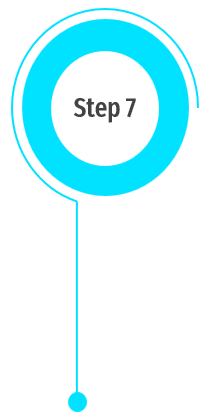 |
Submit Optional NOI – by Friday, March 1, 2024
If you haven’t already, submit the optional Tribal and Territories Only Notice of Intent (NOI) (Page 1 of the NOFO) to apply by the deadline of March 1, 2024, via email to CPRG@epa.gov. |
 |
Review EPA Resources – by Friday, March 8, 2024
A: Read the Tribes and Territories NOFO, if time allows, referring to the Implementation Sections for important differences from the General NOFO. B: Review the Tribes and Territories Evaluation Criteria before you begin modifying your General competition application. There is a net reduction in points for the application, and it is important to note that: |
 |
Modify the Project Narrative as Needed – by Friday, March 22, 2024
A: Review the funding tiers for the Tribal NOFO (page 15), and make sure that your funding request falls under one of the three tiers. If it doesn’t, you will need to change to change it and ensure that your proposal Objectives, Budget, GHG Measures, Outcomes, and Outputs are in line and achievable with the new funding request. B: Ensure that the lead applicant and partners are eligible entities under the NOFO (see page 16). C: Change the performance period to begin on December 1, 2024, and end no later than December 1, 2029, in your Workplan and Budget to fit the Tribal NOFO (page 15). D: Make your Workplan shorter to reflect the 15-page maximum (down from 25 in the General) (page 26 of the NOFO). Take into consideration the changes in the Evaluation Criteria for each section. E: Add a section on Benefits and Community Engagement (page 32 in the NOFO) to replace the Low-income and Disadvantaged Communities section. F: Remove the section on Job Quality, as it is not required or scored in the Tribal and Territories competition. G: Adjust the GHG Appendix, as needed, (see page 30 of the NOFO) to ensure that it reflects any changes made to GHG emission reduction estimates. H: Adjust the Budget Narrative, as needed, (see page 35 of the NOFO) to ensure that it reflects any changes to GHG reduction measures in the application. I: Edit the Summary Project Cover Sheet, as needed, to reflect any changes to the Workplan. J: Review the Evaluation Criteria for Tribes and Territories once again to ensure that your Workplan reflects the point allocation for each category. |
 |
Modify the Mandatory and Optional Documents as Needed – by Friday, April 19, 2024
A: Remove the list of Climate and Economic Justice Screening Tool (CEJST) Census tract IDs or EPA’s EJScreen Census block group IDs for each community that may be affected by a proposed measure in the application. Tribes meet the definition of disadvantaged communities for the purposes of this program. B: Attach a Memorandum of Agreement (for coalition applications only) rather than a Letter of Intent from each coalition member. |
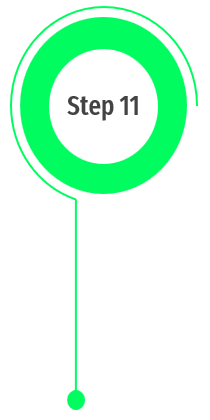 |
Review and Submit – by Friday, April 26, 2024
Although the application deadline is Wednesday, May 1, 2024, at 11:59 p.m. ET, plan to begin the submission process by Friday, April 26th, to give yourself time to troubleshoot if you have any difficulty submitting. These step-by-step instructions and video can help. Please plan to set aside at least three hours to submit your application to Grants.gov. A: To begin the submission process, go to Grants.gov and click the red “Apply” button at the top of the “view grant opportunity” page associated with this opportunity. B: Upload your application, including: All Project Narrative elements via the Project Narrative Attachment Form. Mandatory Documents: Optional Documents: C: Submit and confirm that all verifications & confirmations from Grants.gov are received & saved. D: Take …a very long nap! |
*Special thanks to Jaimie Lewis and staff at Anese & Associates for creating elements of the Checklist, including the Project Narrative Template, sample Project Narrative, sample Technical Appendix and Budget Narrative, Memorandum of Agreement, and Optional Budget Spreadsheet; to Holly Baker of Climate Justice Alliance for creating the Commitment Letter template; to ClimateXChange for their webinar and recap article on climate action planning best practice; and to the Conveners Network for their PCAP template.
